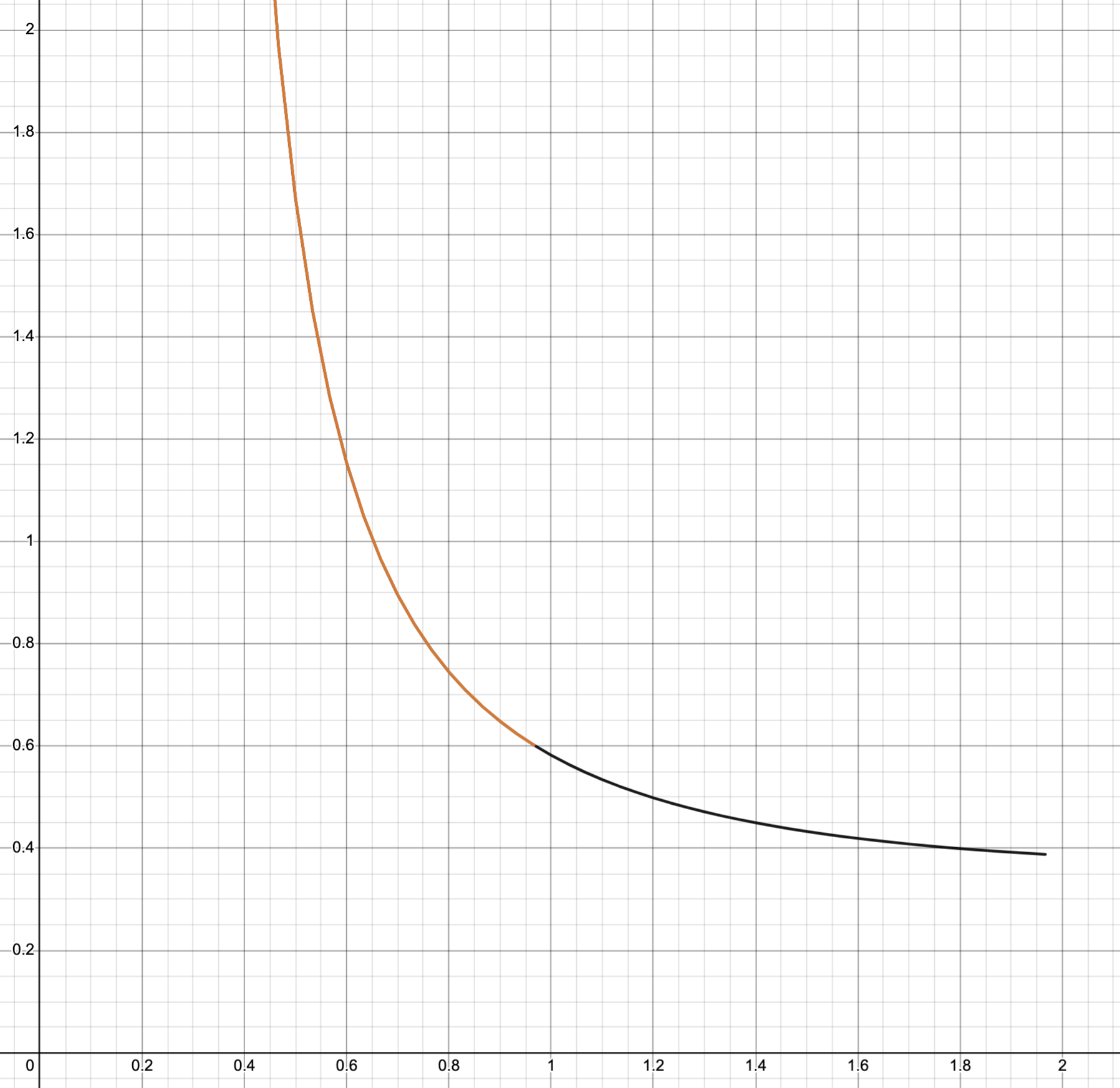This is nowhere near a formal answer, but it might contain some useful starting points for doing computation.
The problematic aspect of the function
$$ \varphi(s) = \Gamma\left(1+\frac{1}{s}\right) + \sum_{n=0}^\infty \frac{(-1)^n}{n!} \zeta(-ns)$$
is that $\zeta(-ns)$ grows faster than the factorial function when $s>1$, so the series cannot converge. However, the series is alternating, so from a certain viewpoint, it should 'morally' cancel out.
From a divergent series regularization point of the view, the simplest way to obtain a finite value from the function $\varphi(x)$ is truncate the series early to approximate its true value. Thus, defining
$$\varphi(s) \approx \Gamma\left(1+\frac{1}{s}\right)+ \sum_{n=0}^{N} \frac{(-1)^n}{n!} \zeta(-ns) $$
gives a good approximation to the true value of the function near $s=1$. The optimal place to truncate the series is generally at the point where the the size of the term is smallest. Here is a graph of this approximation with $N=10$ on the real line, with the infinite series shown in orange and the finite series in black

For some values of $\mathfrak{R}(s)>1$, the cancellation automatically happens on its own if we look at the integral representation rather than the sum of the residues. Thus, the integral
$$ \varphi(s) = \frac{1}{2 \pi i s} \int_{c - i N}^{c + i N} \Gamma\left(\frac{t}{s}\right) \zeta(s)dt $$
provides another way to approximate the values of $\varphi(x)$ outside of its usual realm of convergence. The two methods unsuprisingly agree with each other, but they tend to converge well in different areas.
If we want to obtain the value of $\varphi(s)$ somewhere far from $s=1$, or we want to get an arbitrarily good approximation, we can rewrite zeta using its functional equation to obtain
$$\varphi(s) = \Gamma(1+\frac{1}{s}) - \frac{1}{2} + \sum_{n=1}^{\infty}\frac{\left(-1\right)^{n}}{n!}\left(\frac{\left(2\pi\right)^{-ns}}{\pi}\sin\left(-\frac{\pi ns}{2}\right)\left(ns\right)!\zeta\left(1+ns\right)\right)$$
The part that causes it to diverge is the factorial, so we can replace it by its integral representation and simplify to obtain
$$\varphi(s) = \Gamma(1+\frac{1}{s}) - \frac{1}{2} - \frac{1}{\pi}\int_{0}^{N}e^{-t_{2}}\sum_{n=1}^{\infty}\frac{\left(-1\right)^{n}}{n!}\left(\frac{t_{2}}{2\pi}\right)^{ns}\sin\left(\frac{\pi ns}{2}\right)\zeta\left(1+ns\right)dt_{2}$$
This integral agrees with the other two methods in areas where they converge. There are likely ways to simplify this last integral, though I'm not sure if such simplifications will actually make the function easier to compute.
Update: Here is a different integral that is only valid for $\mathfrak{R}(s) >1$
$$\varphi(s) = \Gamma\left(1+\frac{1}{s}\right)-\frac{1}{2} - \\ \frac{1}{\pi} \int_0^\infty \frac{e^{-\left(\frac{t}{2\pi}\right)^{s}\cos\left(-\frac{\pi s}{2}\right)}}{e^{t}-1}\left(\sin\left(\ \left(\frac{t}{2\pi}\right)^{s}\sin\left(-\frac{\pi s}{2}\right)\right)\right) dt$$

